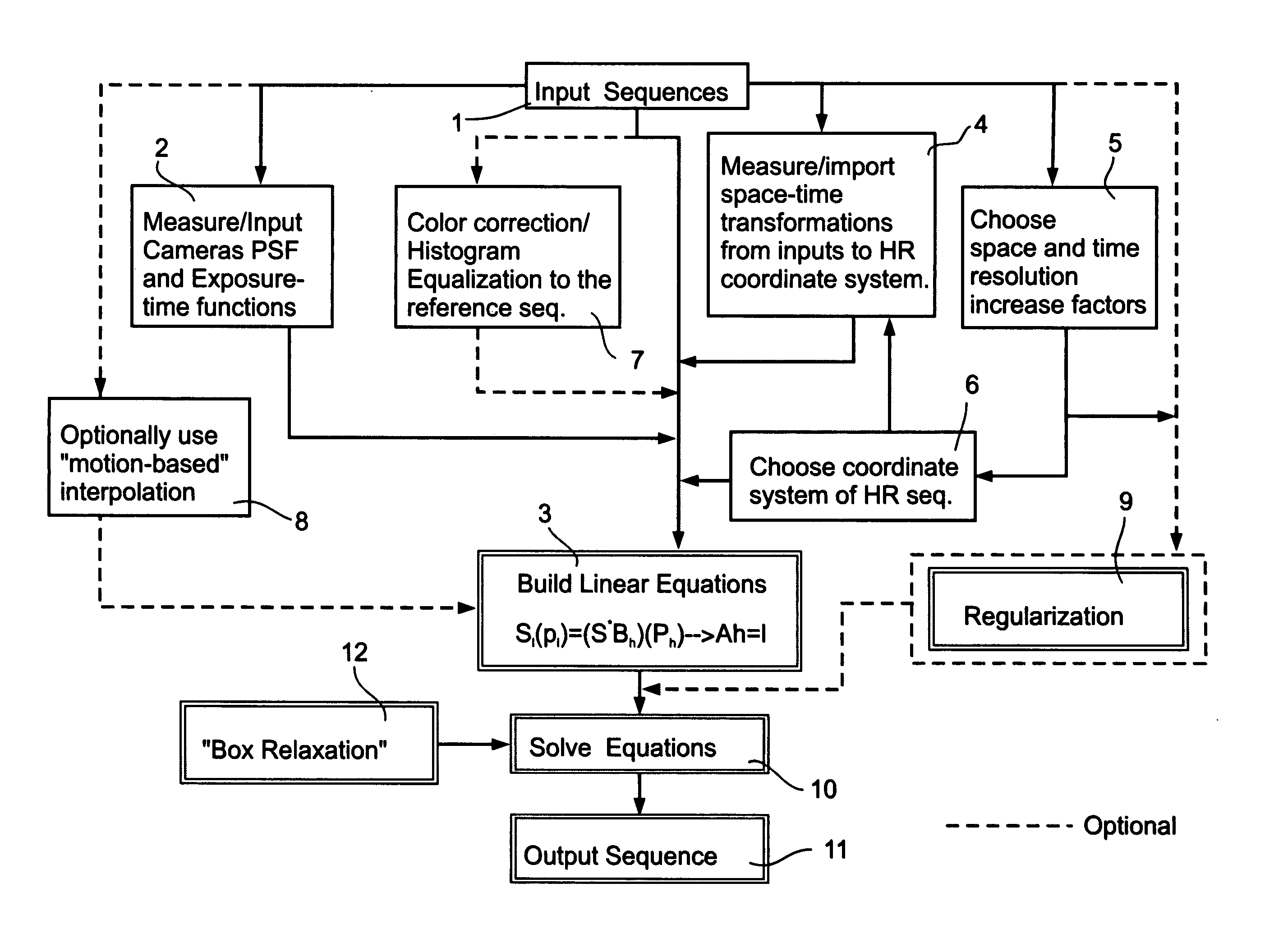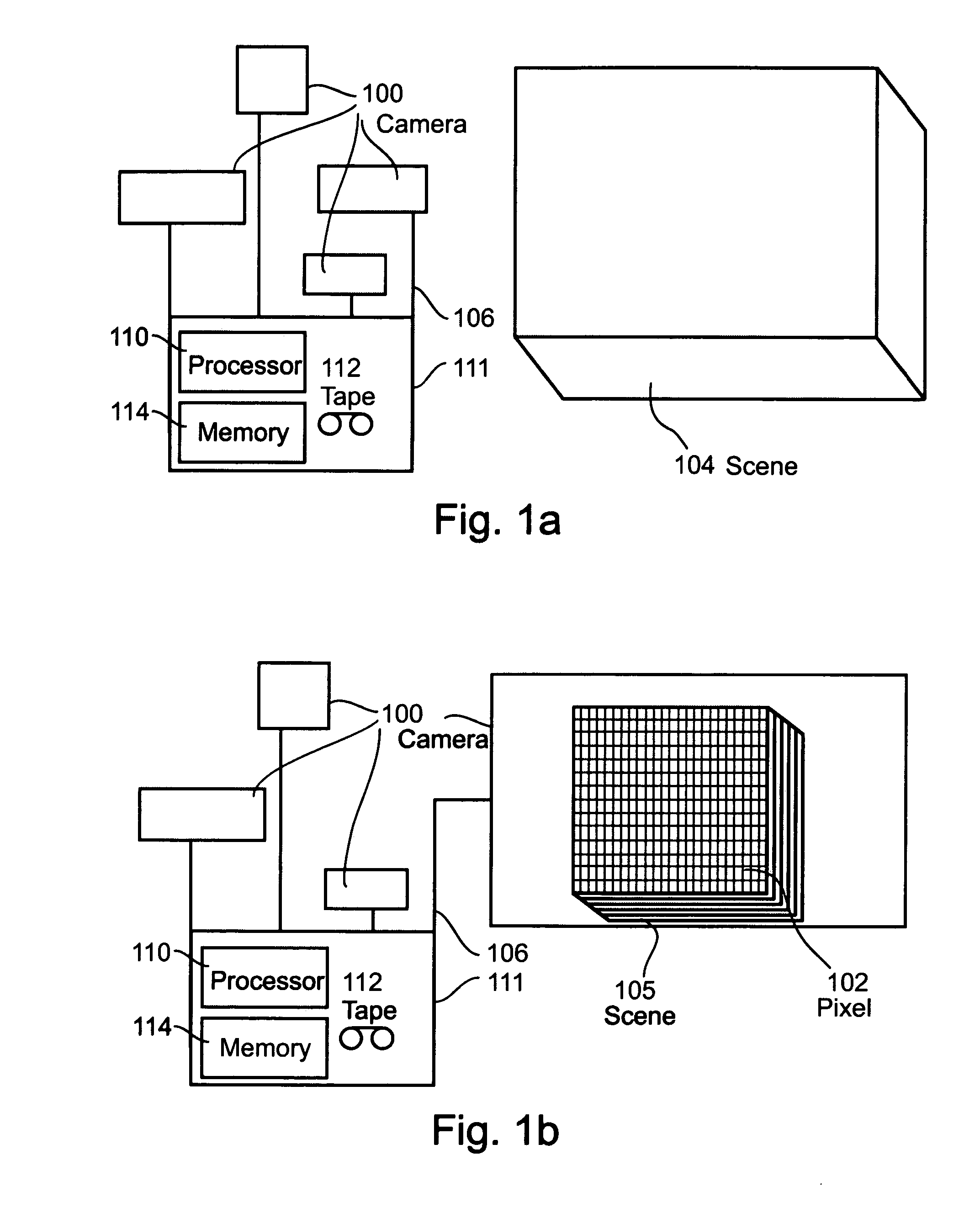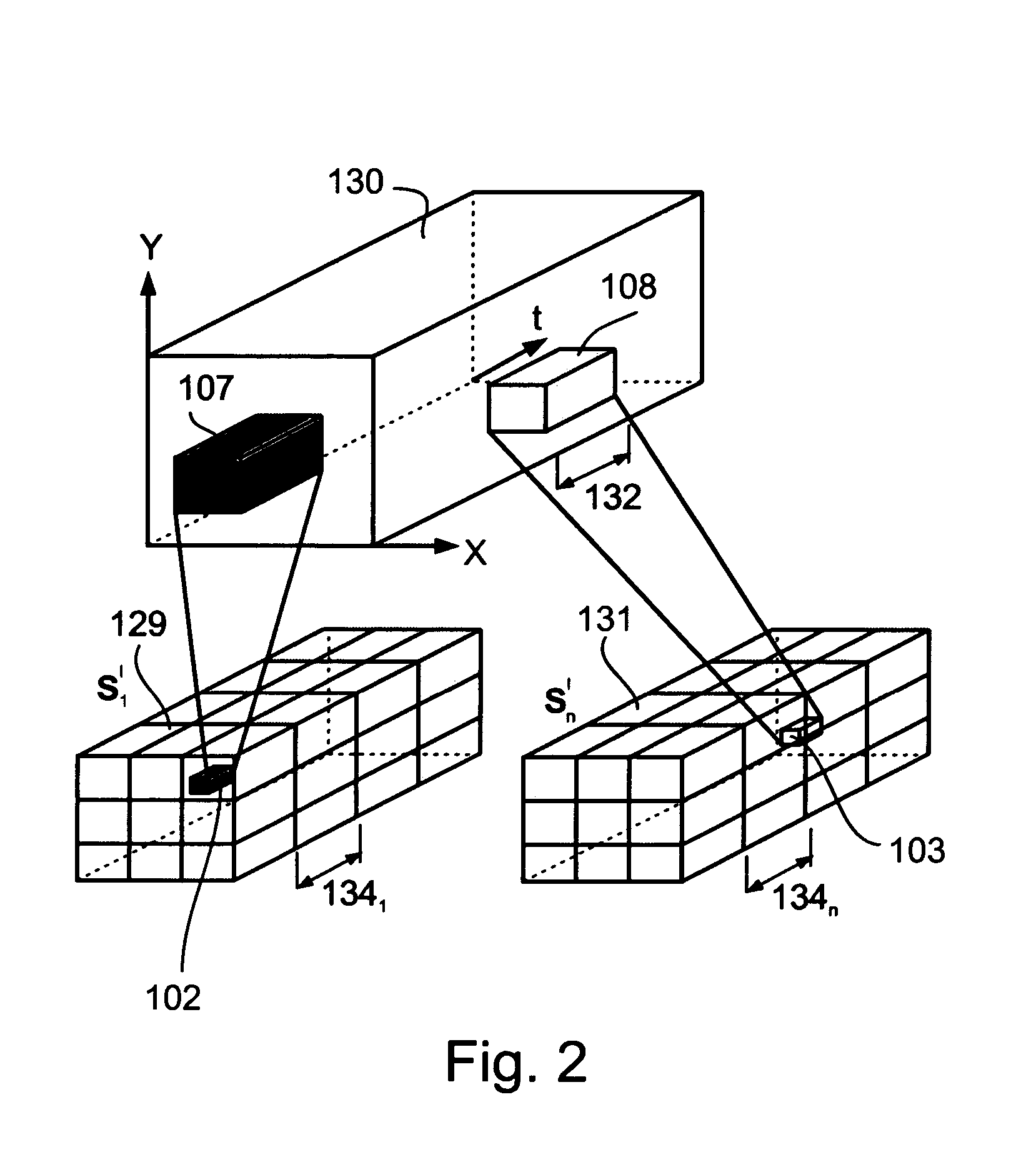System and method for increasing space or time resolution in video
a technology of space or time resolution and video, applied in image enhancement, color signal processing circuits, instruments, etc., can solve the problems of limiting the size or spatial features of objects, frame-rate limiting the temporal resolution of video images, and limitations, etc., to achieve high temporal and/or spatial resolution and high quality
- Summary
- Abstract
- Description
- Claims
- Application Information
AI Technical Summary
Benefits of technology
Problems solved by technology
Method used
Image
Examples
Embodiment Construction
The present invention provides a unified framework for increasing he resolution both in space and in time of a space-time visual entity, including but not limited to a still image, a sequence of images, a video recording, a stream of data from a detector, a stream of data from an array of detectors arranged on a single sensor, a combination thereof and so forth. The increased resolution a space-time visual entity is created by combining information from multiple video sequences of dynamic scenes obtained at a plurality of sub-pixel spatial and sub-frame temporal misalignments. This spatiotemporal super-resolution reduces a number of effects, including but not limited to spatial blur, spatial artifacts, motion blur, motion aliasing and so forth.
According to the preferred embodiments of the present invention a plurality of low resolution video data streams of a scene are combined in order to increase their temporal, spatial or temporal and spatial resolution. Resolution may optiona...
PUM
 Login to View More
Login to View More Abstract
Description
Claims
Application Information
 Login to View More
Login to View More - R&D
- Intellectual Property
- Life Sciences
- Materials
- Tech Scout
- Unparalleled Data Quality
- Higher Quality Content
- 60% Fewer Hallucinations
Browse by: Latest US Patents, China's latest patents, Technical Efficacy Thesaurus, Application Domain, Technology Topic, Popular Technical Reports.
© 2025 PatSnap. All rights reserved.Legal|Privacy policy|Modern Slavery Act Transparency Statement|Sitemap|About US| Contact US: help@patsnap.com



